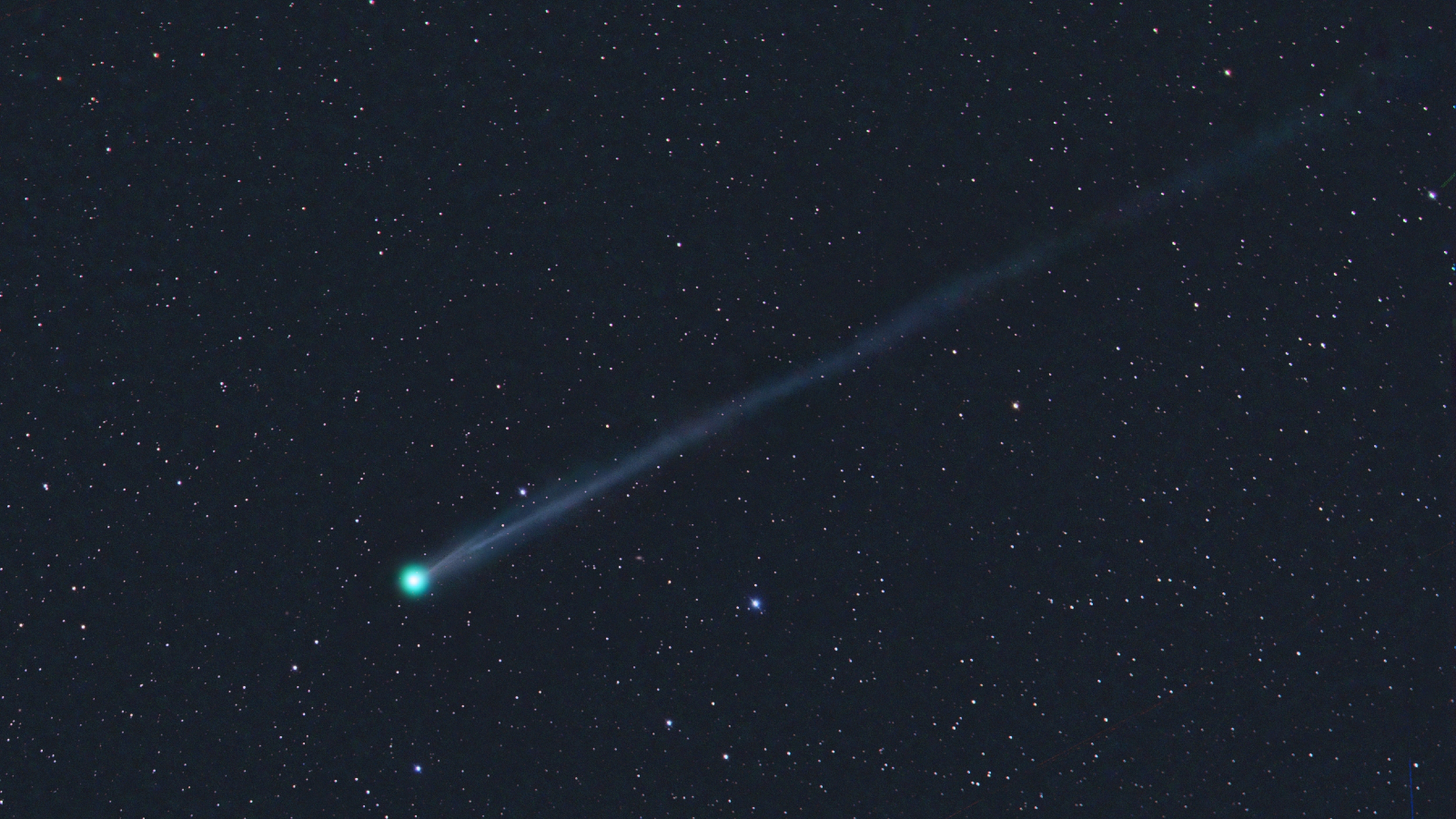An emerald-colored comet discovered at the start of the month has just “erupted” as it continues to race toward the inner solar system, before eventually slingshotting around the sun.
The icy outburst, which temporarily caused the comet to brighten, could be a sign that it is a “cold volcano.” The eruption also may have implications for whether the comet will be visible to the naked eye — but it is too soon to tell for sure.
Comet C/2025 F2 (SWAN) was discovered April 1 by an Australian amateur astronomer who was searching through data from the Solar and Heliospheric Observatory, a collaboration between NASA and the European Space Agency. The green comet, which was previously dubbed SWAN25F before being officially recognized by NASA, is predicted to reach its closest point to the sun on May 1, when it will get within 31 million miles (50 million kilometers) of our home star.
But new images of the comet, captured by Arizona-based astrophotographer Mike Olason, show that the comet showed a significant increase in brightness shortly after it was first spotted. This was likely the result of an eruption, which sprayed ice and dust into space and reflected additional sunlight back to Earth, Spaceweather.com reported.
“For those who have wondered why Comet SWAN has been so hard to observe the past few mornings, it is because the comet has faded a magnitude since reaching its brightest point several days ago,” Olason told Spaceweather.com. “Sometime between April 3 and April 6, the comet had a major eruption, which increased its brightness by a factor of 4.”
Related: In a 1st, scientists predicted that volcanic comet was due to pop ‘like a Champagne bottle’ — and it did

A very small number of comets are “cryovolcanic,” meaning cold volcanic. These objects are capable of erupting repeatedly when they are heated by sunlight, which causes their icy interiors to vaporize and triggers a pressure buildup that eventually causes the comet’s shell, or nucleus, to crack. When this happens, the comet’s icy guts — known as cryomagma — spray into space and expand the cloud of gas and dust around the comet, known as a coma. This expansion of reflective material makes the comet shine more brightly in the night sky.
One of the most famous cryovolcanic comets in recent times was comet 12P/Pons-Brooks, which was nicknamed the “devil comet” due to a pair of horns that emerged in the comet’s coma during its initial eruptions. The comet later lost these horns but continued to erupt sporadically until it reached its closest point to our home star in April 2024.
Another intriguing cryovolcanic comet is 29P/Schwassmann-Wachmann. This city-size object has been consistently exploding over the past few decades, even though its orbit rarely takes it close to the sun. Its most recent outbursts occurred in November 2024, when its brightness increased by 300 times.
However, Comet SWAN’s outburst may not be the result of cryovolcanism at all. “The eruption may have been a pocket of ice [on the comet’s surface], exposed and explosively vaporized by the intensifying heat of the sun,” Spaceweather.com reported, adding that this would also explain why the brightening phase was not as intense as those of 12P and 29P and lasted only a few days.
As a result, future observations will be needed to determine the true origin of the eruption, as well as to learn the true nature of the comet.
The outburst also adds some uncertainty to the future visibility of SWAN. The comet can already be spied using a backyard telescope or stargazing binoculars, but experts previously predicted it could also become visible to the naked eye in the next few weeks.
However, these predictions were made using data that included the temporary brightening of SWAN, meaning that experts may have overestimated its eventual brightness. More observations will be required to see if this is the case.
